- Watch the Annual Report 2023 Video
- How We’re Funded & How We Spend
- How We Conserve
- How We Connect
- How We Protect
- Funding Our Future
- Download the Full 2023 Annual Report


How We’re Funded and How We Spend
The Department of Wildlife Resources (DWR) largely exists through non-general fund revenues. We operate from within multiple restricted funds to support unique programs and responsibilities in Law Enforcement, Wildlife, Aquatics, Boating, Nongame and Endangered Species, Capital Programs, and Outreach, as well as administrative support functions in Human Resources, Planning and Finance, and the Executive Office.
Primary Revenue Sources That Support DWR
(as a percentage of annual revenue)
- Hunting, Fishing, and Trapping Licenses, Permits, and Stamps 37%
- Federal Grants for Wildlife and Aquatics Support 23%
- Sales Tax on Outdoor Equipment for Hunting, Fishing, and Wildlife Watching (HB38) 17%
- Watercraft Sales and Use Tax 10%
- Boat Registration and Titling Fees 6%
- Federal Grants for Boating Support 3%
- Miscellaneous 4%

DWR’s Annual Operating Budget for FY23 By Division
- Executive Office/Nongame/Capital Programs $3.9 million
- Aquatics $10.6 million
- Wildlife $12.1 million
- Human Resources $927,000
- Law Enforcement $23.1 million
- Outreach $5.3 million
- Boating $2.9 million
- Planning, Finance & IT $10.6 million

Capital Project Categories
- Maintenance Reserve $1.5 million
- Public Land Improvements $1.1 million
- Boating Access $1.25 million
- State Dam Safety $3.85 million
- Land Acquisition $6.88 million

Economic Contributions in Virginia
Hunting
510,000 hunters spent $409 million on hunting-related equipment expenditures
Fishing
1.4 million anglers spent $350 million on fishing-related equipment expenditures
Recreational Motorized Boating
247,824 registered boats resulted in $623 million spent on boating-related equipment expenditures
Wildlife Watching
7.1 million wildlife viewers spent $654 million on wildlife watching-related expenditures

Conserve. Connect. Protect.
DWR leads the conservation and management of healthy terrestrial and aquatic wildlife resources, including for both common and at-risk birds, fish, mammals, reptiles, freshwater mussels and other aquatic invertebrates, and amphibians—and healthy wildlife habitats for the benefit of present and future generations.

Bringing Elk Back to Virginia
From the initial translocation of 75 elk during 2012–2014, DWR now estimates 250+ elk reside in Southwest Virginia, with the majority of their habitat on reclaimed mining lands. DWR Wildlife Division staff have radio-collared 39 elk to monitor changes in the population and provide valuable data to inform management actions (e.g., public access for viewing and hunting, hunting impacts on the herd and herd movement, highway mitigation, etc.). Ongoing habitat work for the elk involves DWR staff and supportive volunteers and partners.
The elk herd offers a variety of recreational opportunities. Elk viewers from across the country have participated in guided tours, utilized purpose-built viewing platforms, and tuned into the online elk live-stream camera. Two successful elk hunts have taken place in the Elk Management Zone, in October 2022 and 2023, representing a major milestone for the Virginia elk program. The hunt was all about providing opportunities for hunters, which is a key part of DWR’s mission. Local landowners and partner organizations such as Southwest Virginia Sportsmen and the Rocky Mountain Elk Foundation were integral to the preparation and effort. Applications for the 2022 hunt generated $513,000 in revenue and one of the six elk tags was distributed to a partnering land conservation organization to raffle off, with the more than $90,000 in proceeds to benefit wildlife conservation efforts in the Elk Management Zone.
The restoration of the elk herd and the resulting recreational opportunities it offers has helped create a tourism industry in the Buchanan County area, including the annual Elk Fest.
Learn More About Elk in Virginia
Creation of Coastal Forest WMA
DWR’s purchase of land on the Eastern Shore of Virginia and creation of the Coastal Forest Wildlife Management Area marks one of the most significant conservation efforts it has ever undertaken there. When completed, this initiative will greatly improve habitat for wildlife, provide highly desirable public access on more than 8,600 acres, and support coastal resiliency. More than 60 priority at-risk wildlife species will benefit from this work, along with hundreds of other species of wildlife and plants found on these parcels. The addition will not only create a conservation corridor through Accomack County into Northampton County to provide habitat for wildlife now and into the future, but also will create extensive opportunities for wildlife-dependent recreation, such as wildlife viewing and hunting.
Learn More About Coastal Forest WMA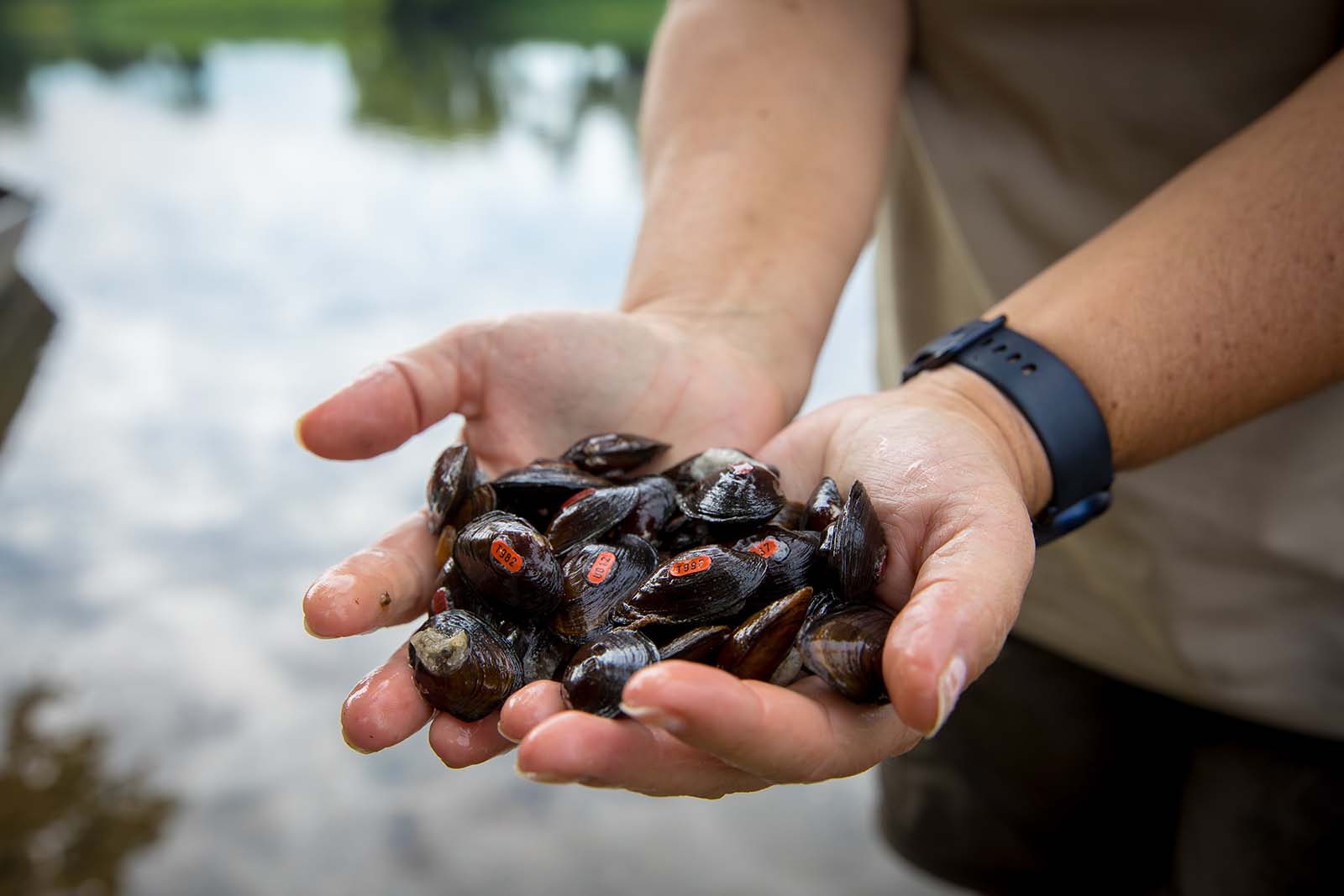
Historic Freshwater Mussel Restoration Efforts
DWR and partners successfully propagated and stocked multiple species, some endangered and threatened, of freshwater mussel species into Virginia rivers. Work at DWR’s Aquatic Wildlife Conservation Center (AWCC) in Marion produced 87,689 mussels of 12 different species, including the critically endangered Appalachian monkeyface and rough pigtoe. This was the first time both species had been grown and stocked anywhere in the world. The AWCC stocked 8,212 mussels of 22 species into western Virginia waters. The Virginia Fisheries and Aquatic Wildlife Center (VFAWC) in Charles City propagated almost 500,000 freshwater mussels of nine different species, seven of which were Species of Greatest Conservation Need. The VFAWC released more than 12,000 mussels in FY23, including 2,000 James spinymussel, a federally and state-endangered species that had not been found in the James River since the 1960s. Both facilities conduct ongoing research and population monitoring projects as well.
Learn More About the AWCC & Mussel Restoration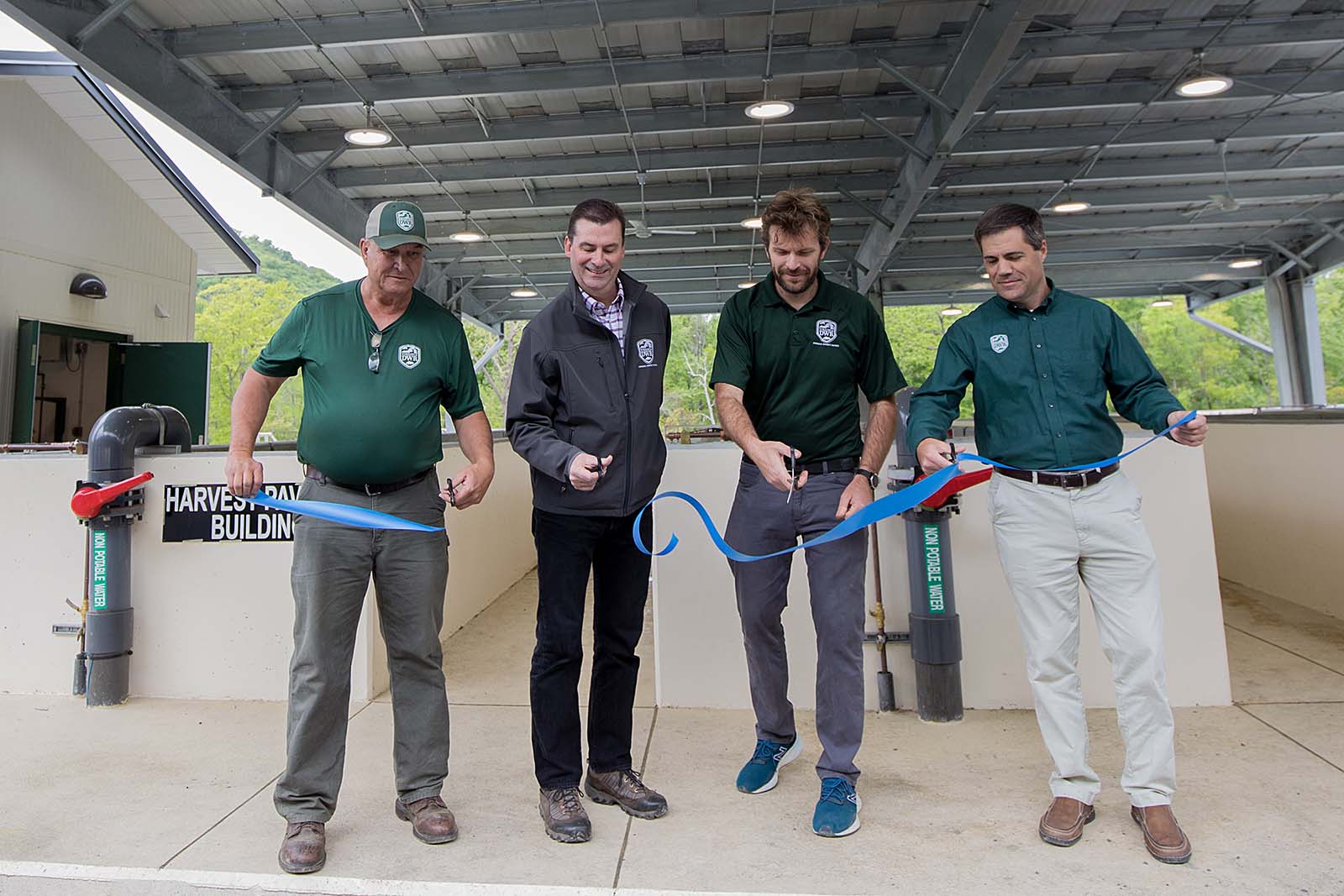
Renovated Front Royal Fish Hatchery
Extensive renovations to the Front Royal Fish Cultural Station were completed in 2023, equipping the facility with state-of-the-art equipment and resources to maximize the production and stocking capability of both warm and cold-water fish such as smallmouth bass, muskellunge, trout, catfish, and walleye into the South and Shenandoah river watersheds. Improvements included a new hatchery building with modern technology, a sophisticated UV filtering system for the water intake from Passage Creek, and four ponds lined with rubber.
Learn More About Front Royal Fish Hatchery
Fish Stocking
DWR’s five coldwater fish production facilities stocked nearly 1 million brook, rainbow, brown, and tiger trout between fall 2022 and spring 2023, of which 800,000 were catchable size. These trout are stocked into 200 different locations and benefit approximately 60,000 trout anglers. DWR’s four warmwater fish production facilities stocked 3.5 million fish.

- Rainbow trout 524,425
- Brown trout 100,991
- Brook trout 147,114
- Tiger trout 17,627
- Walleye and saugeye 1.8 million
- Striped bass 1.15 million
- Black crappie 300,000
- Hybrid striped bass 155,000
- F1 largemouth bass 100,000
- Channel catfish 90,000
- Muskellunge 2,000

Robust Wild Turkey Population
The 2023 spring turkey season resulted in a harvest of 24,447 turkeys, the highest spring turkey harvest ever recorded in Virginia. Although many states within the region are reporting declining spring turkey harvests and populations, Virginia seems to be a bright spot regionally. Four of the top five turkey harvests have occurred since 2020, indicating that populations appear to be robust.

Conserve. Connect. Protect.
DWR connects people to Virginia’s outdoors through education and information about boating, fishing, hunting, trapping, wildlife viewing, and other wildlife-related activities. Communication efforts focus on safety and enjoyment of wildlife resources by all Virginians.
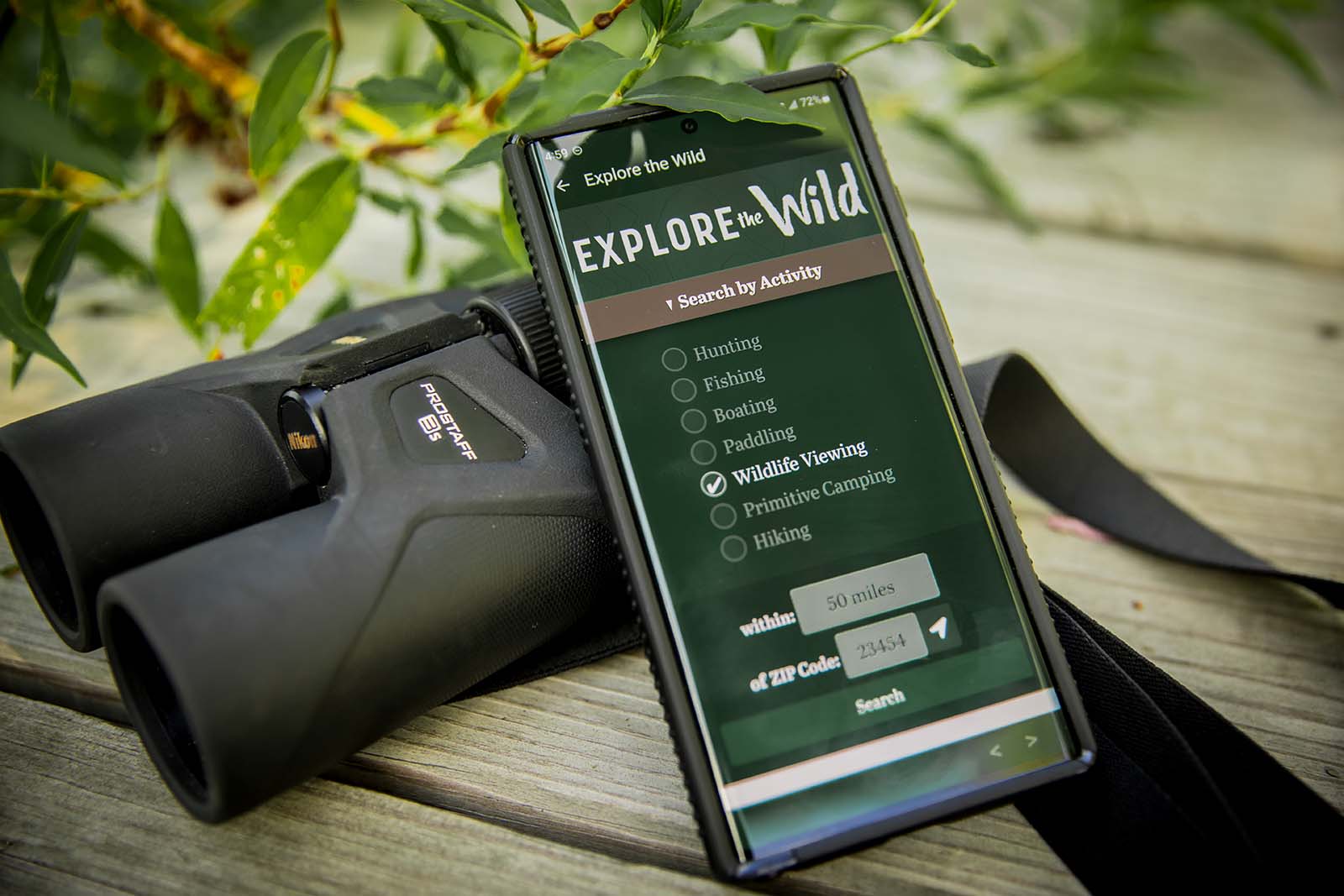
Explore the Wild
DWR staff planned, developed, and implemented a significant update to the access portion of the DWR website and created an easy-to-use portal for users to find public lands offering location-based recreational opportunities. A robust database of public lands opportunities, amenities, and features includes properties owned and/or managed by federal, state, county, or municipal governments that invite access for a variety of out- door recreation uses. Available on both the DWR website and mobile app, Explore the Wild provides a single online destination to connect the public with new places to enjoy boating, fishing, hunting, hiking, paddling, or wildlife viewing.
Learn More About Explore the Wild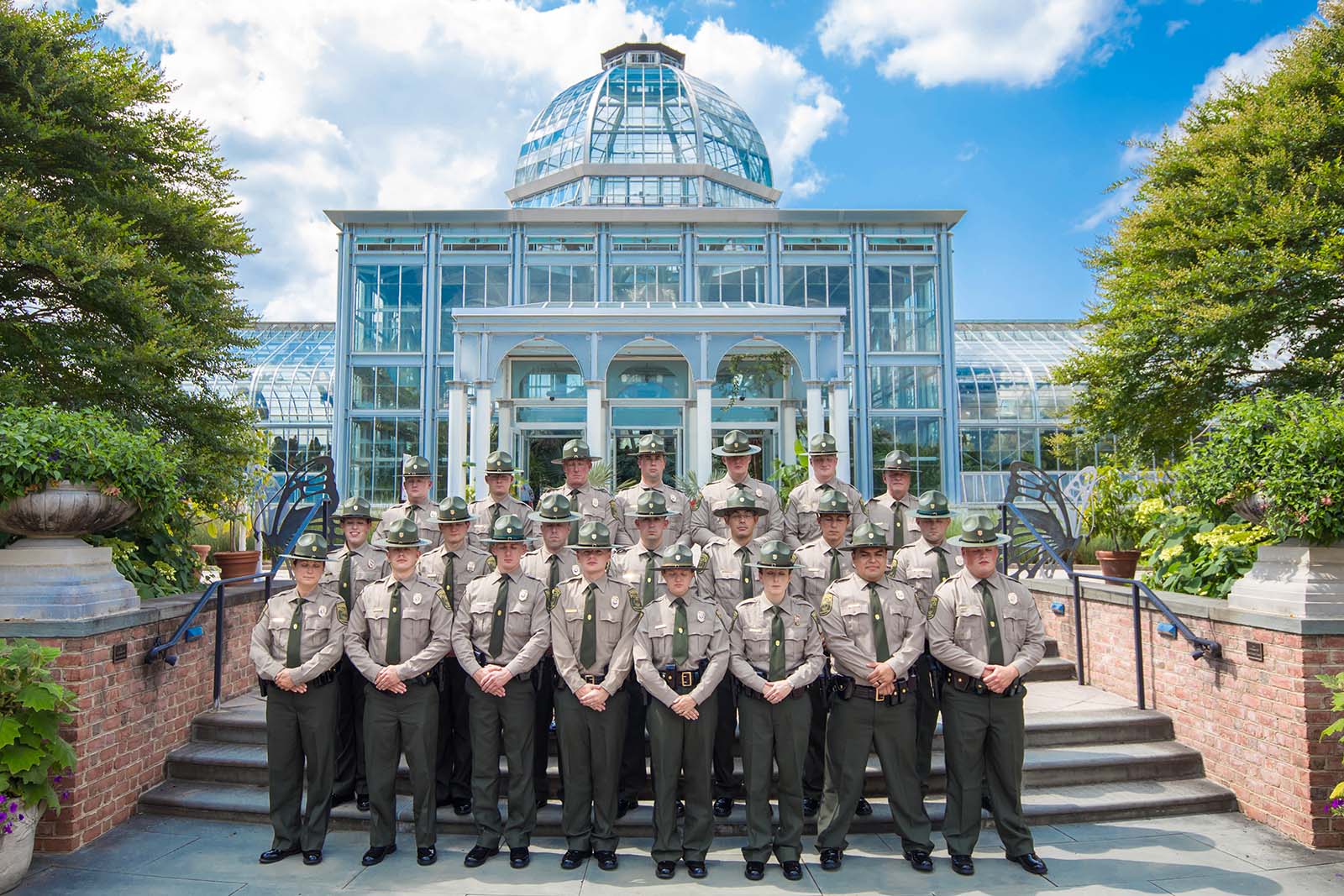
Finding and Training the Next CPO Generations
The DWR Law Enforcement Division undertook a comprehensive recruitment process for a new class of Conservation Police Officers (CPOs) that engaged with potential applicants and actively reached out to a range of communities. These initiatives were driven by the profound goal of identifying individuals possessing the qualities and commitment required to become the next natural resource protectors—those who would stand as protectors of the intricate balance of woodlands and waters, and the diverse ecosystems they entail. By engaging with potential recruits in diverse settings and contexts, the recruitment section demonstrated a commitment to ensuring that the ranks of the Conservation Police are enriched with individuals who mirror the values and mission of safeguarding the state’s previous wildlife and ecological heritage. The recruits trained in the Basic Academy for 26 weeks, and 22 recruits graduated the 12th academy and were sworn in as CPOs, then were assigned to field training officers to continue their training.
Learn More About Conservation Police Careers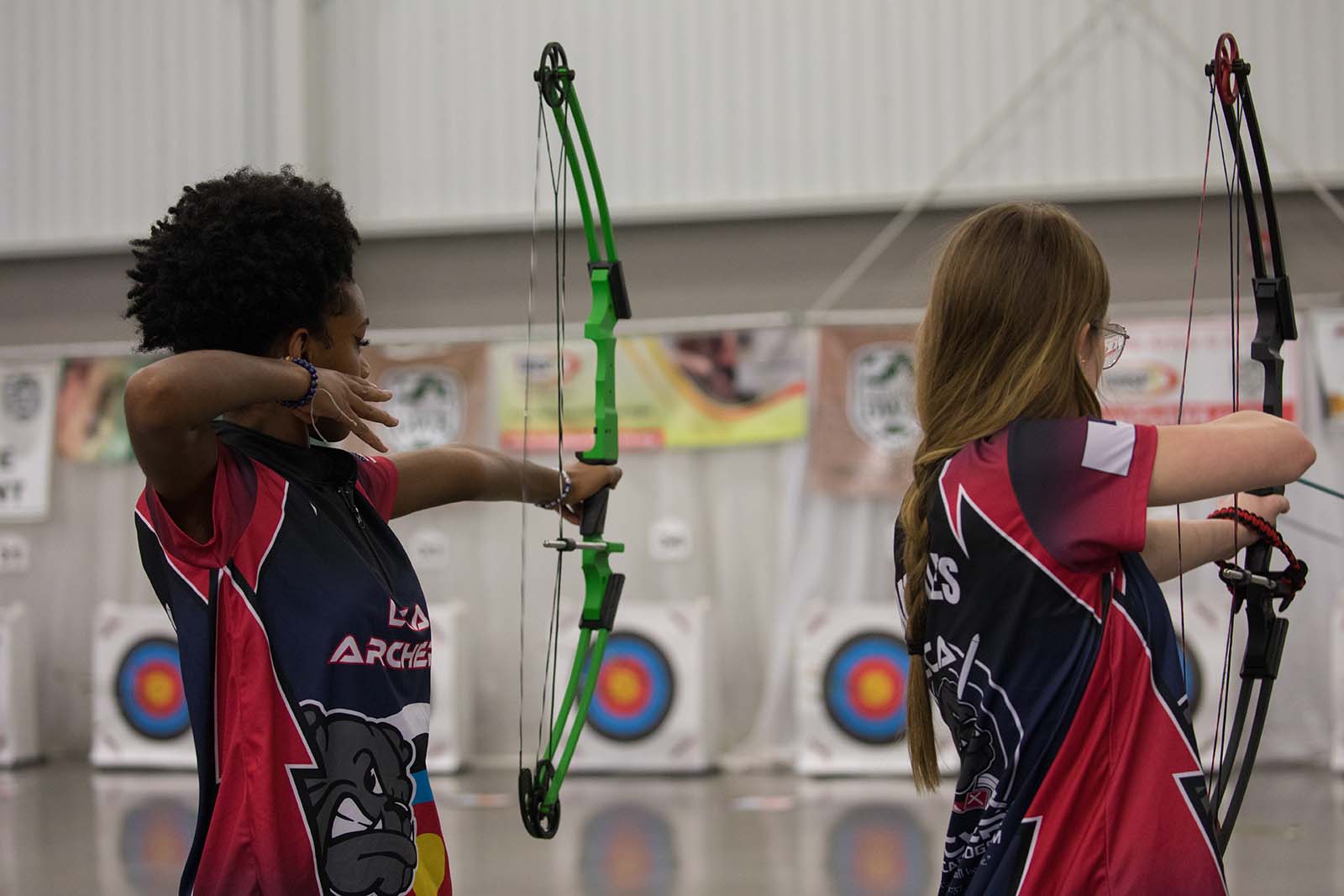
National Archery in the Schools Program
DWR hosted the 14th annual Virginia National Archery in the Schools Program (NASP) Tournament/IBO 3D Challenge, with more than 600 archers competing for more than $30,000 in educational scholarships. DWR also offered 19 Basic Archery Instructor Certification trainings for NASP, training 83 teachers, county parks staff, camp counselors, parent volunteers, scout leaders, and support staff to allow them to provide basic archery instruction for more than 20,000 new students. Virginia NASP is growing, and proudly offered archery instruction to more than 48,000 students.
Learn More About the NASP Tournament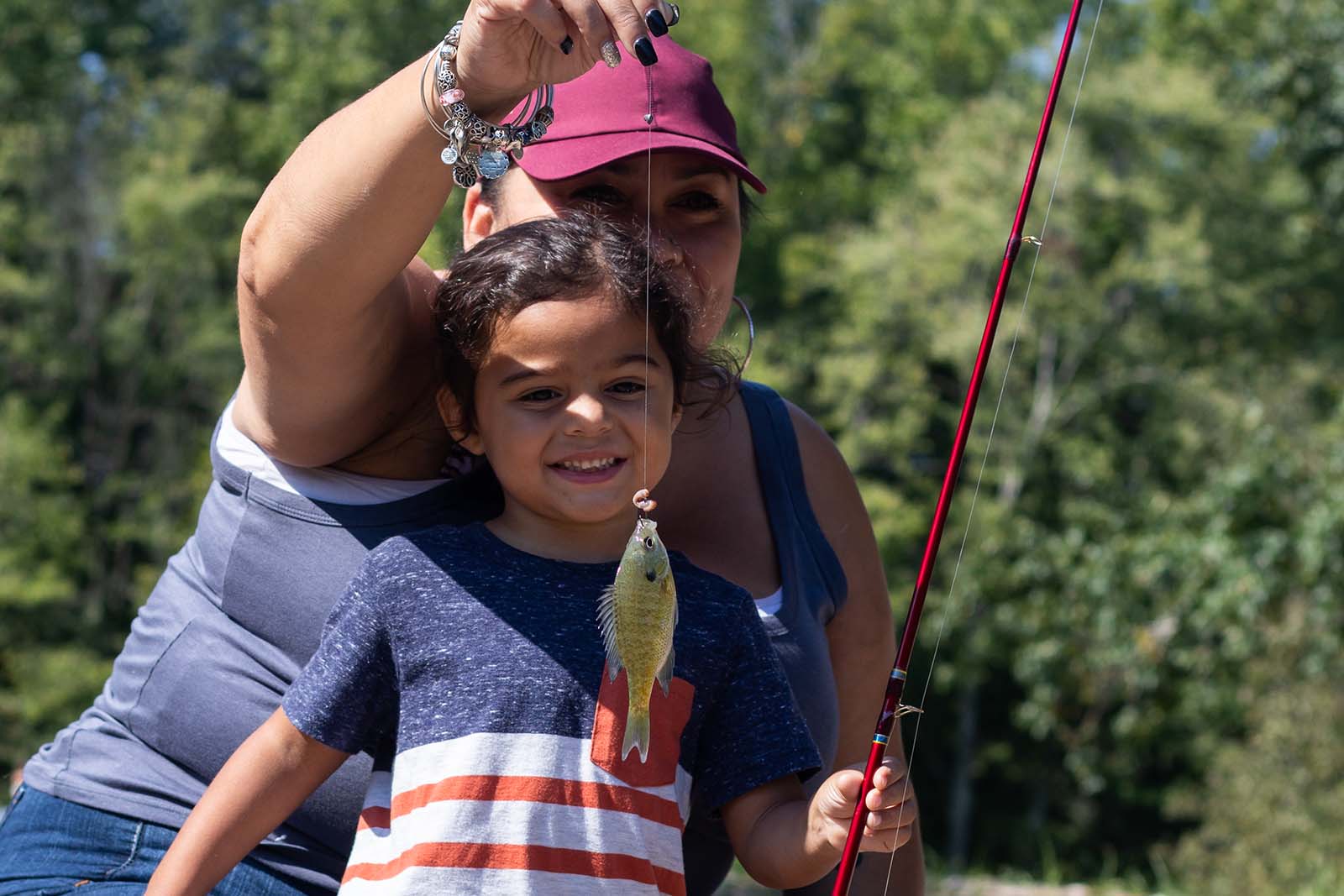
Pescadores Para El Planeta
In 2023, a grant from the Recreational Boating and Fishing Foundation’s George H.W. Bush Vamos a Pescar Education Fund provided valuable funding for a summer and after-school fishing program in Harrisonburg Public Schools called Pescadores Para El Planeta. The program connects middle school students to fishing and aquatic education opportunities they wouldn’t otherwise have access to.
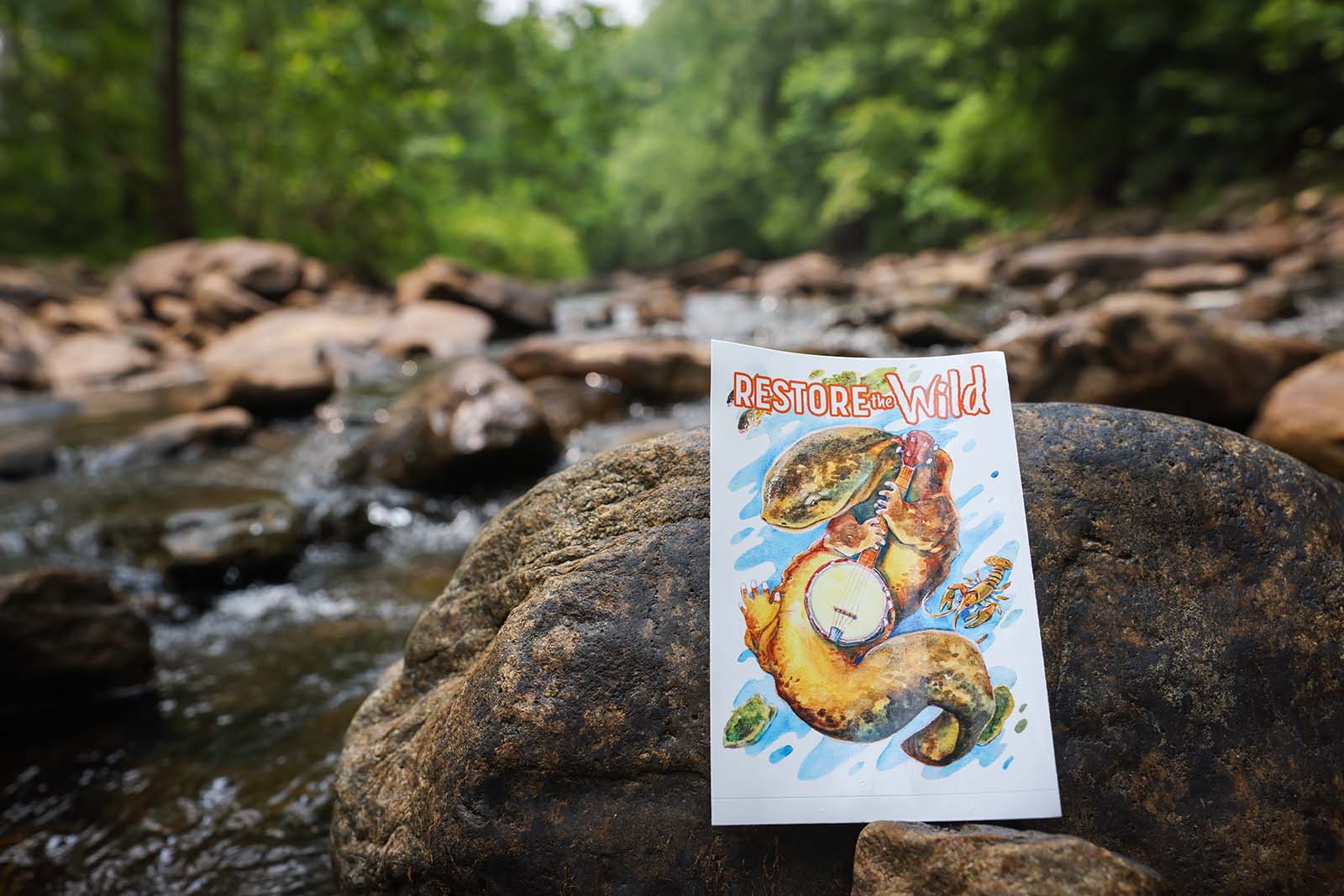
Hellbender as Hero
DWR’s Restore the Wild initiative offers a membership concept as a way to contribute to a conservation fund earmarked for habitat restoration projects. With a focus on helping the agency become more relevant to new audiences and to diversify revenue streams, Restore the Wild took advantage of a national marketing plan and strategy to reach the next generation of conservationists. In FY23, Restore the Wild gained 1,242 new members and received 305 donations, resulting in more than $64,000 in revenue. Those funds will be dedicated to habitat restoration projects on agency properties that benefit a diversity of Virginia’s Species of Greatest Conservation Need. For its third annual Restore the Wild Artwork Competition, DWR asked artists to depict the eastern hellbender, an endangered aquatic salamander species with a brown, slimy appearance that doesn’t traditionally lend itself to portraiture. The species selection drew attention to clean water as a message, and the contest received a record 139 submissions. Thanks to a new and exciting partnership, the contest was able to display all artwork entries at a gallery for public display. Winning artworks were used to help promote DWR and Restore the Wild’s mission.
Learn More About Restore the Wild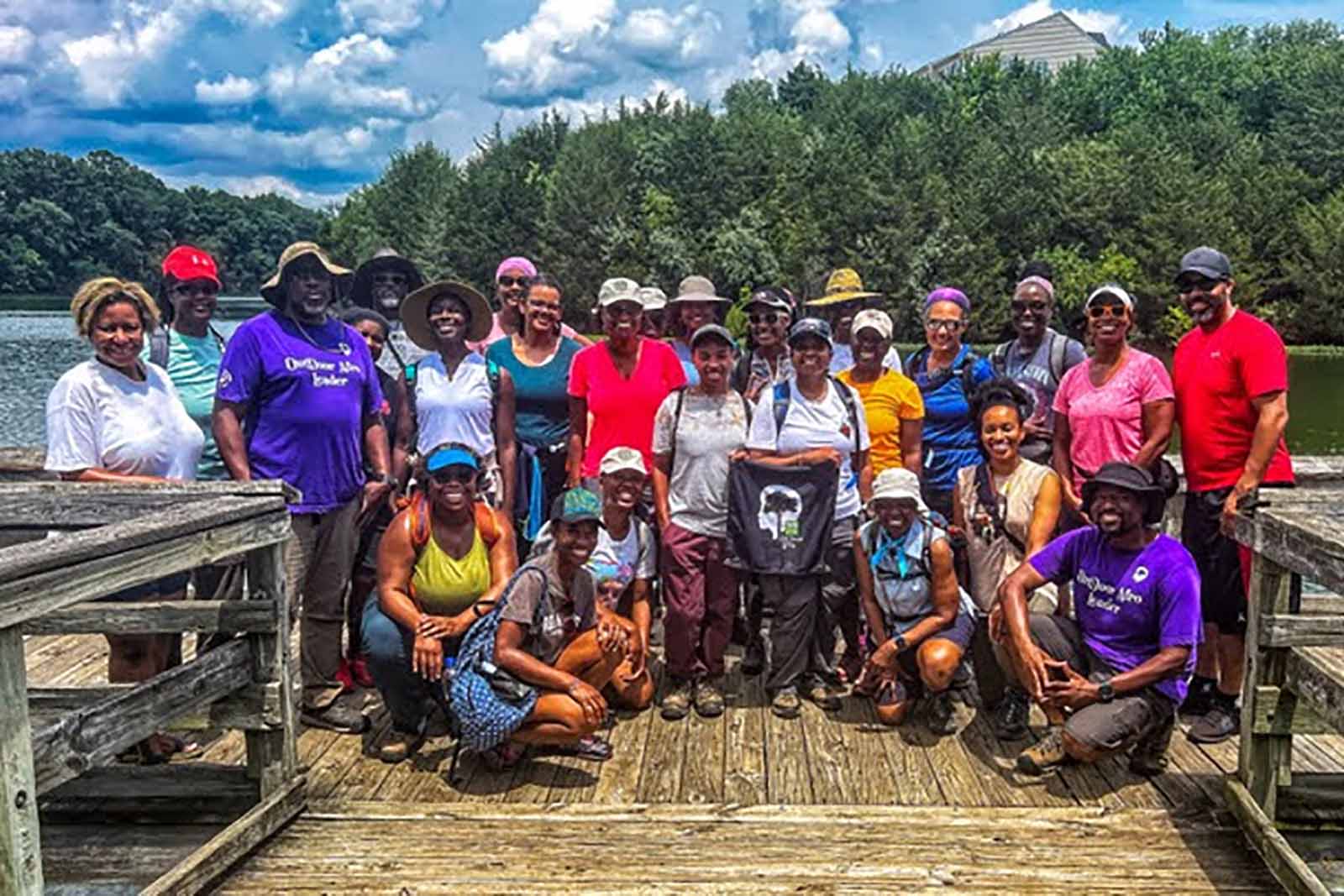
Connecting Communities
A focus has been made on seeking out and prioritizing partnerships with outdoor affinity organizations and personalities to connect underrepresented constituencies with the work of DWR. The Outreach division and the Office for Diversity and Inclusion initiated ongoing relationships with ARTEMIS Sportswomen, the Upper Mattaponi Nation, Humble Hustle, Blue Sky Fund, Rivah Sistah, and Outdoor Afro. Events helped connect groups to DWR, including the Outdoor Afro/DWR Field Day, during which 30 members of the DMV chapter of Outdoor Afro participated in a field day featuring archery, fishing, hikes, and wildlife viewing. DWR also coordinated with Hmble Hstle Clothing and the Virginia Tourism Corporation on specialty merchandise designed to reflect the theme “The Outdoors are Better Together.” The unique partnership combined creative and promotional efforts focused on inclusivity and diversity in the outdoors. Through merchandise sales, the partnership helped fund the Humble Hikes Program, a Hmble Hstle Company initiative to expose inner-city youth to outdoor recreation.
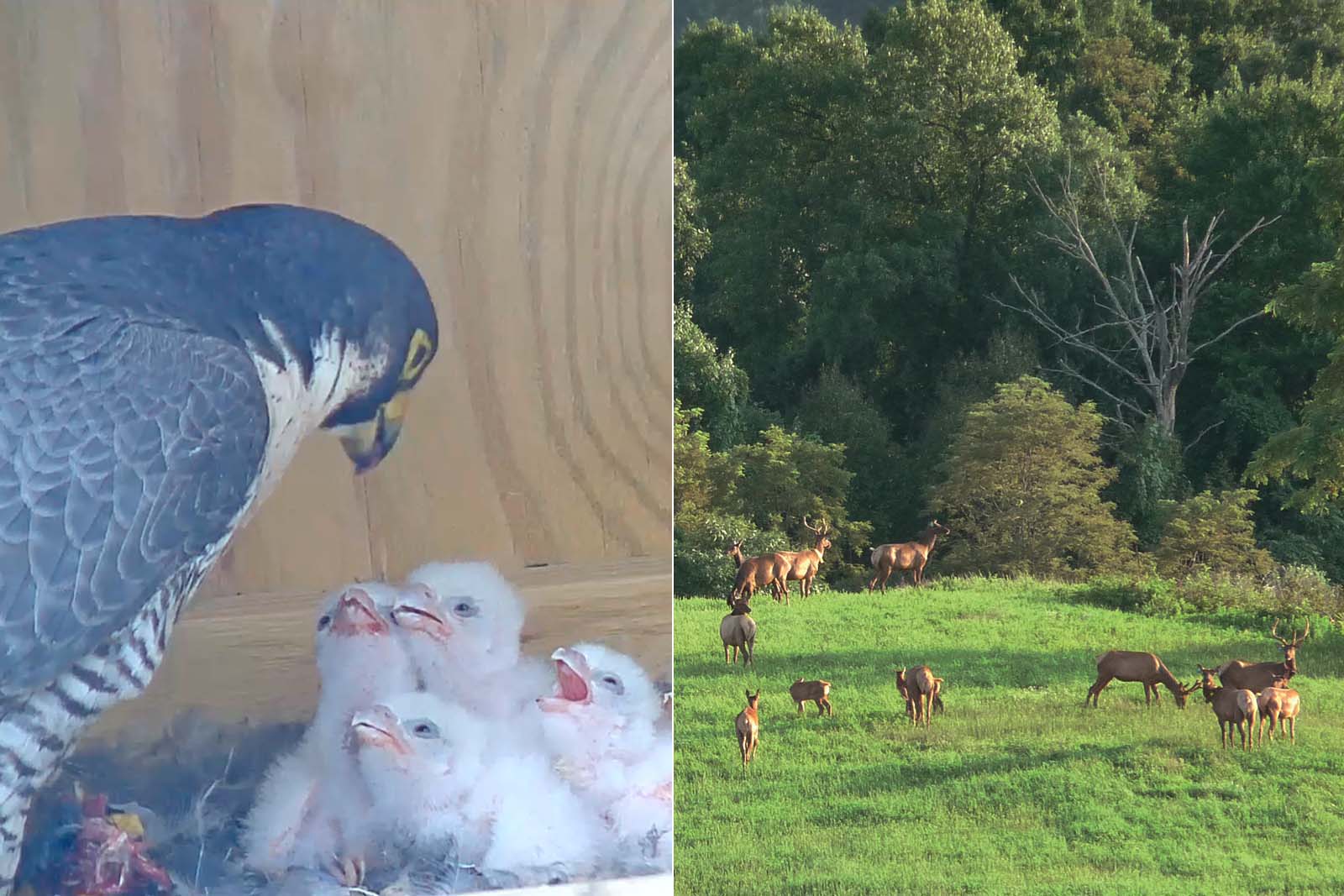
Live-Streaming Wildlife
Coordination between Outreach and Wildlife staff provides four different live-streaming cameras featuring different wildlife species and habitats’ expanding wildlife-viewing opportunities for Virginians and beyond. The Richmond Falcon Cam follows the nesting season of a pair of peregrine falcons at a nest box atop a building in downtown Richmond and is accompanied by an informational web page and educational blog about what viewers are seeing. More than 5,700 subscribers receive the blog updates via email. Elk Cam highlights and informs the public about Virginia’s elk restoration project, using a 4K camera complete with audio to capture the elk herd in Buchanan County. Viewers can see elk grazing and hear the bull elk bugle. The first DWR wildlife viewing camera is Shad Cam, a camera aimed through a window into the waters of the James River, allowing viewers to glimpse a wide variety of species of fish as they navigate the fish ladder at Bosher’s Dam. Shad Cam provides a unique opportunity to educate the public on the need to remove migratory obstacles and restore passage to historic spawning grounds for fish such as American shad. The Shad Cam web page also hosts educational content. The newest addition to the cameras is Marsh Cam, a camera overlooking a marsh environment at Hog Island Wildlife Management Area. The camera can be remotely controlled, and 15 school classrooms signed up to control the camera in Spring 2023. A connection to iNaturalist allows public wildlife observations to display automatically, and more than 700 observations of 74 species were recorded.
Learn More About DWR’s Wildlife Cams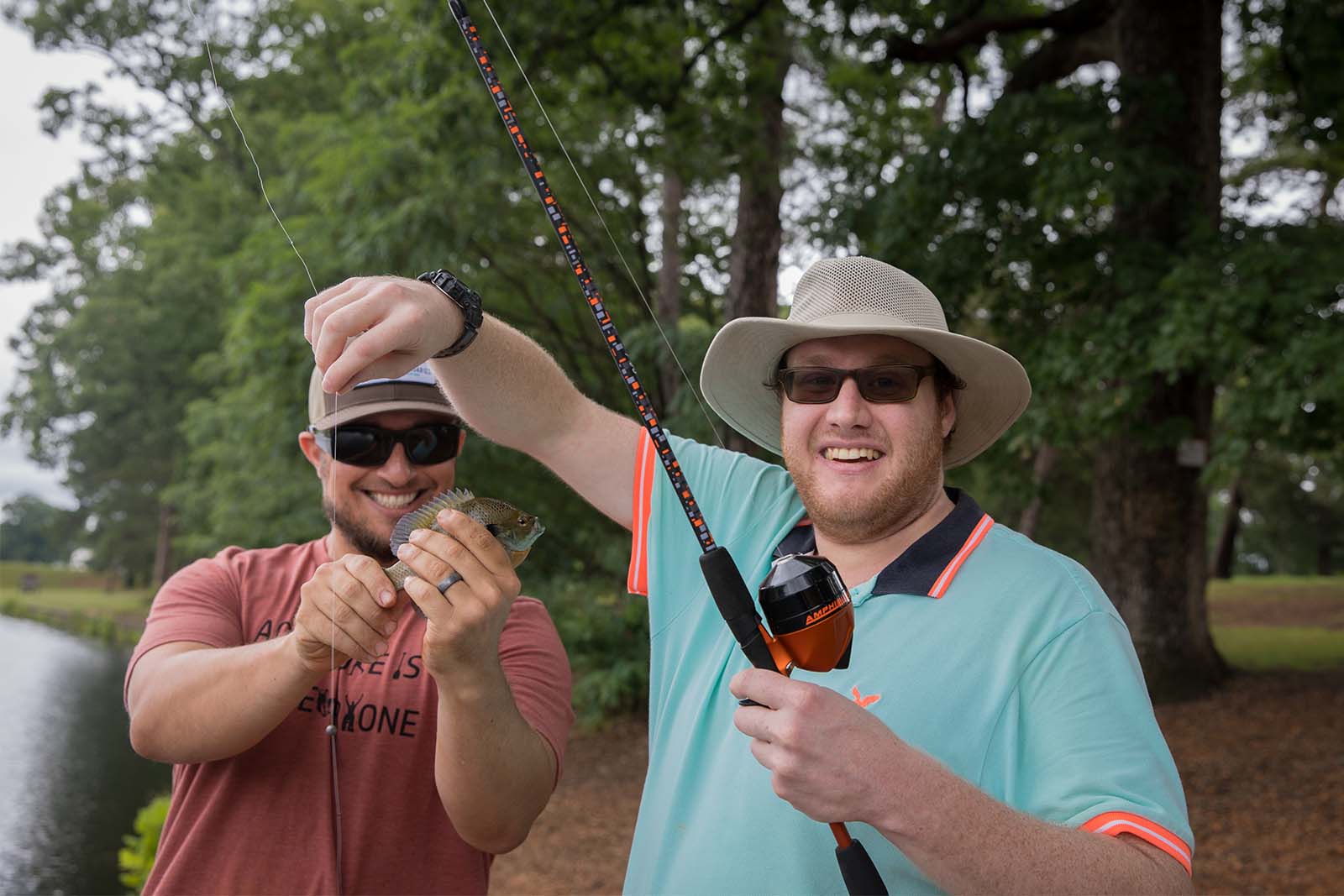
Virginia Wildlife Grant Program
Purchases through DWR’s e-store generated $138,475 in revenue for the Grant Program, which connects under-served youth to the outdoors by funding activities in hunting and shooting sports, fishing, archery, paddling, and wildlife viewing. The program provides participants with learning experiences to increase their interest and participation in outdoor activities. In FY23, the program approved 14 awards totaling $167,600 to create these opportunities.
Learn More About the Virginia Wildlife Grant Program
Conserve. Connect. Protect.
DWR protects people, property, and natural resources by promoting safe outdoor experiences and managing human-wildlife conflicts through both law enforcement and education efforts. We also enforce the Commonwealth’s wildlife and boating laws and regulations.
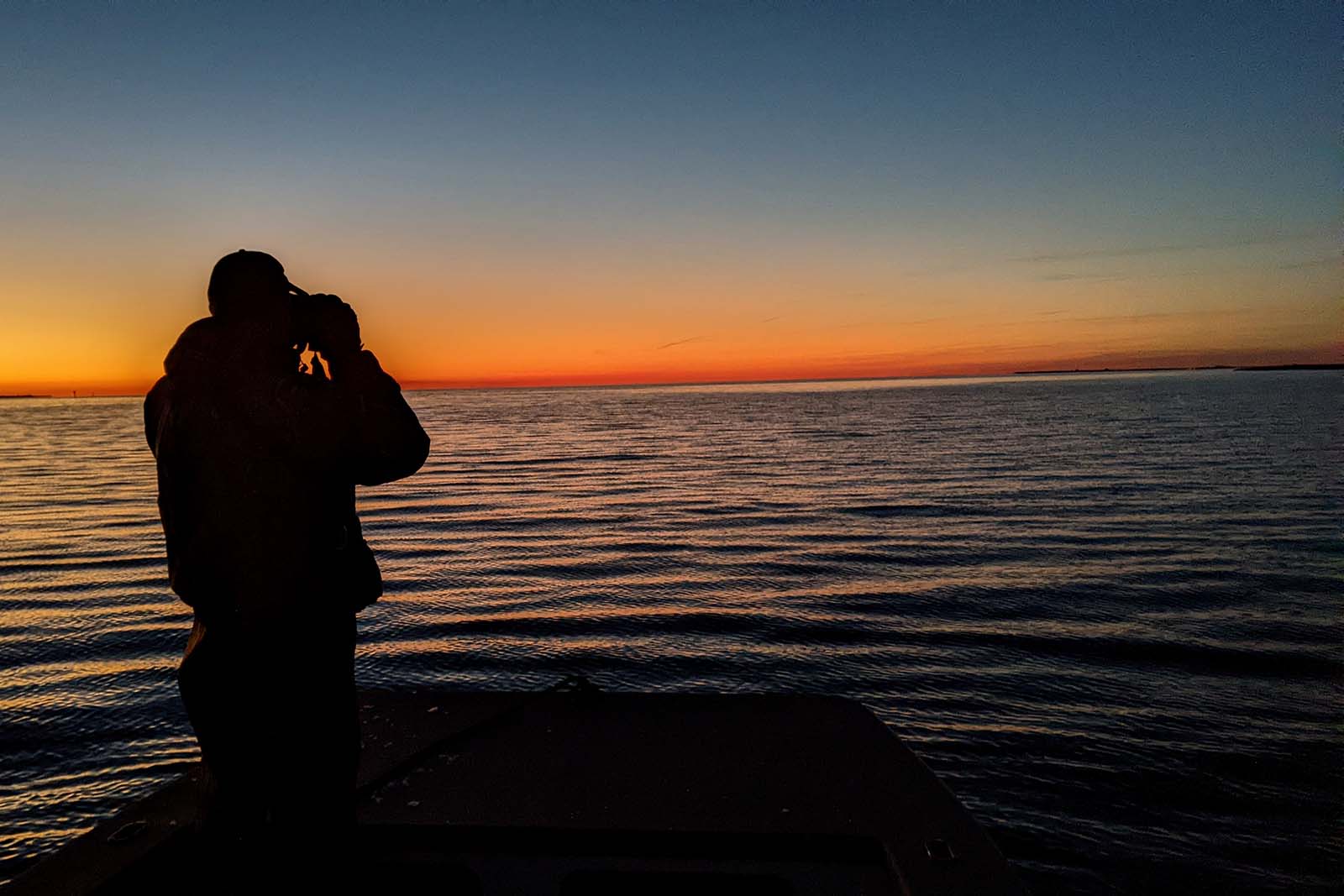
NAWLEA Leadership Program
DWR’s Colonel John J. Cobb was selected to serve as the inaugural chairman of the board of the North American Wildlife Law Enforcement Accreditation (NAWLEA), with Captain Rob Ham chosen as the assistant program director and retired Chief Bobby Mawyer, a current DWR consultant, selected as one of two NAWLEA training coordinators for the program. The creation of NAWLEA in 2022 assumes a pivotal role within the domain of conservation law enforcement by establishing and upholding contemporary standards that mirror the latest professional practices to not only enhance the efficiency and efficacy of law enforcement services, but also to incorporate a strategic approach to addressing and mitigating liability for both the agency and its personnel.
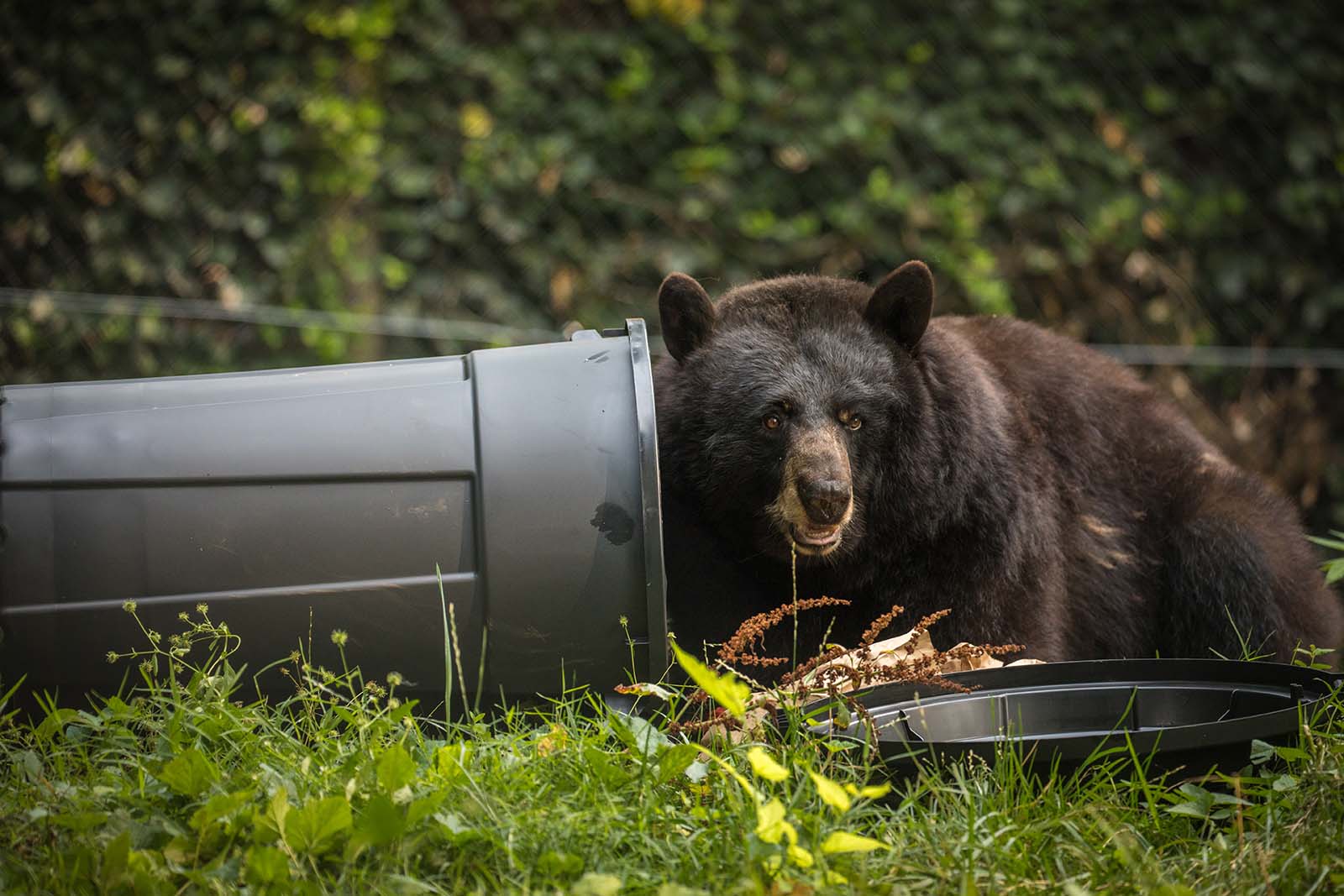
Mitigating Human-Wildlife Conflict
DWR Wildlife Division staff work extensively with a variety of localities and landowners to address a breadth of human/wildlife conflict issues. They also update and refine outreach materials, operational techniques, staff response, and research efforts to provide the most effective route to conflict resolution. DWR and the U.S. Department of Agriculture (USDA)-Wildlife Services continue to collaborate in administering the Virginia Wildlife Conflict Helpline, a central and timely source of science- based wildlife information for Virginia residents that fields more than 15,000 calls annually. Wildlife staff collaborated with the Law Enforcement Division to refine the agency’s responses to wildlife conflict. DWR staff continued to provide innovative and timely assistance to residents dealing with human/bear conflicts, working with State Parks, the U.S. Forest Service, and National Parks to prevent and mitigate conflict. DWR Law Enforcement and Wildlife staff work together to address illegal feeding and subsequent conflict issues. Outreach and education are a significant focus for preventing human/bear conflict. In addition, DWR has annually allocated funds to local governments to mitigate human/bear interactions in chronically affected areas.

Boating Assistant Director Certified
Stacey Brown, the Boating Division Assistant Director, passed the Certified Recreational Boating Professional (CRBP) exam and was awarded her CRBP certification. The National Association of State Boating Law Administrators (NASBLA) recognized Stacey Brown as the sixth person to achieve the CRBP credential. The CRBP certification is a voluntary credential for recreational boating professionals developed by NASBLA. The credential is broad-based and addresses boating professionals’ knowledge, performance, and career achievements in the identified program domains of management, leadership, ethics, and character; boating law administration; boating laws and compliance; federal programs; partnerships; boating safety marketing, outreach, and public relations; boating safety education; boating safety training and program development; waterways management and access; and vessel numbering, titling, and Vessel Identification System (VIS).
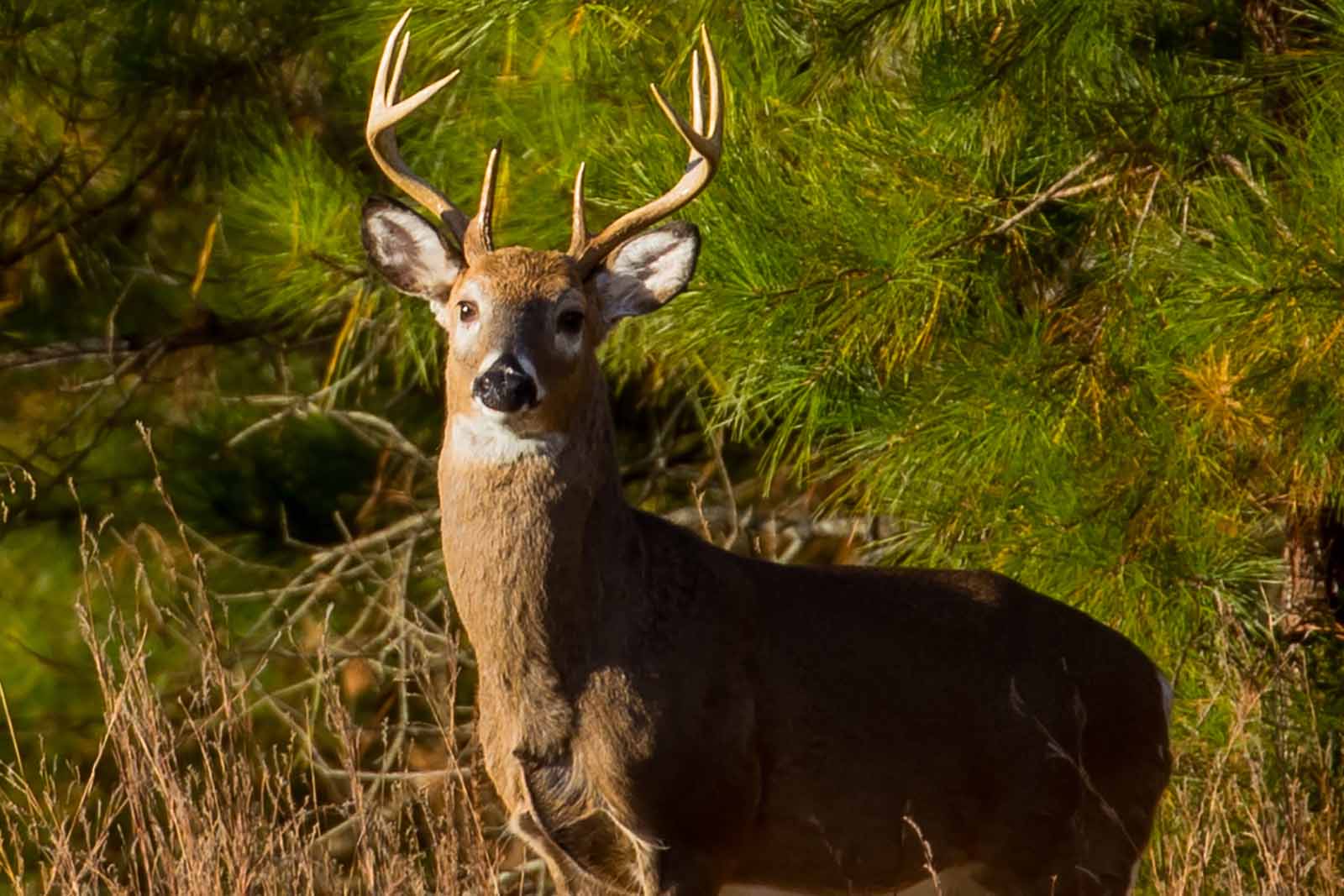
Managing Wildlife Disease
Managing wildlife disease continues to be an expanding program within DWR’s Wildlife division. DWR employs a Wildlife Veterinarian and a Wildlife Health Coordinator. Wildlife biologists and staff perform direct disease management via surveillance/testing programs and regulatory actions as well as proactively developing and conducting public outreach efforts to raise awareness of wildlife diseases and compliance with management actions that can help mitigate disease spread. The efforts focus on Chronic Wasting Disease (CWD), Bear Sarcoptic Mange, Highly Pathogenic Avian Influenza (HPAI), and Rabbit Hemorrhagic Disease (RHDV2).
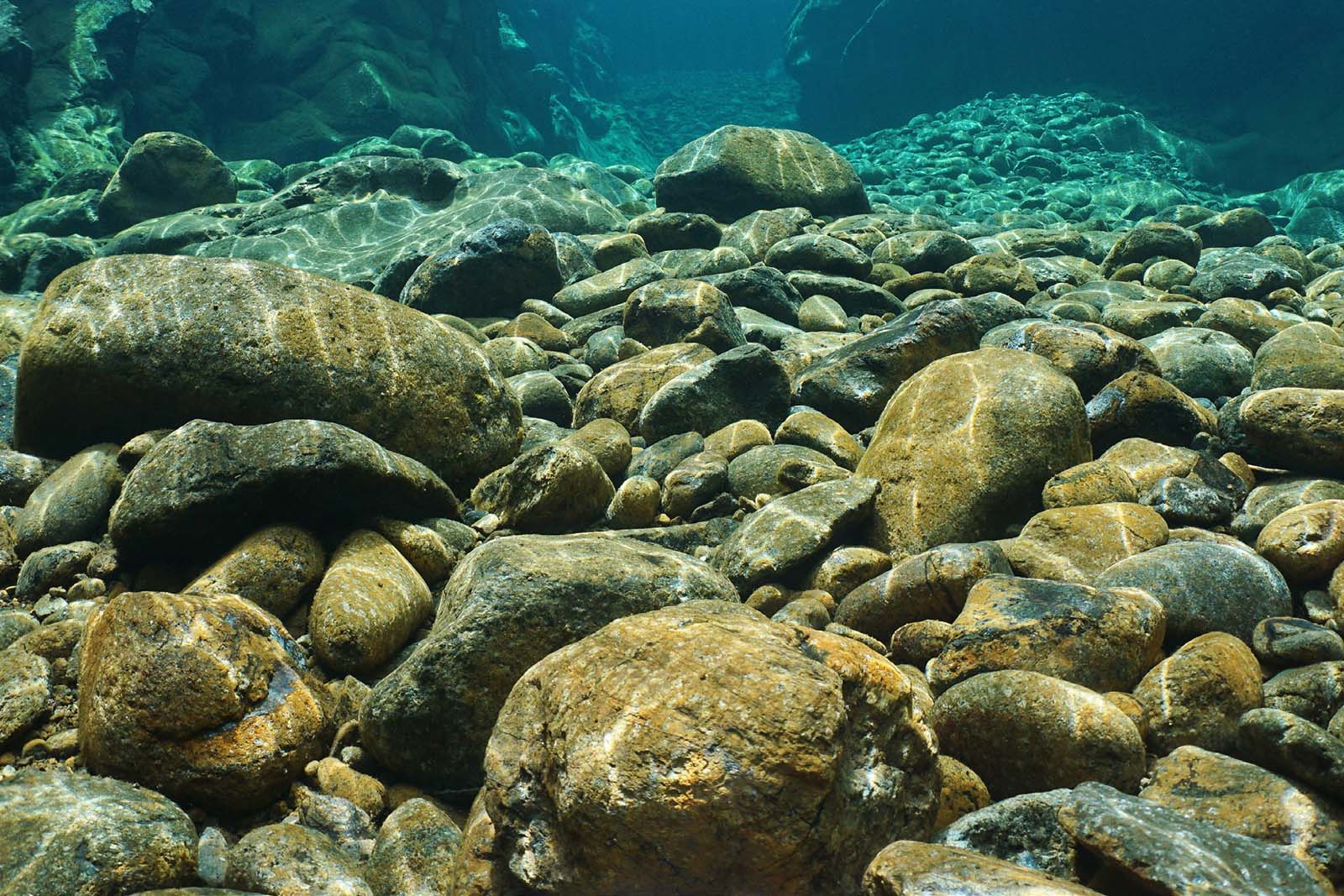
Responding to Invasive Aquatic Species
Invasive species continue to present one of the most important challenges to aquatic resource management in Virginia, and the Aquatics division is working on several initiatives and efforts to limit the negative impact of these species. Alabama bass monitoring remains a top priority, given the species’ demonstrated negative impacts on largemouth and smallmouth bass. DWR staff contributed significant data to research and provided important information about this species to news networks and social media channels. Another invasive species of concern is the northern snakehead. DWR-funded work has shed light into the factors that govern snakehead populations, providing critical information for understanding how their populations function. DWR continues to monitor blue catfish, which support a popular and economically important recreational fishery that requires reduction in numbers to be sustainable. Recent research has identified migration patterns, which will underpin a vital component of blue catfish management in the future.

Law Special Operations Unit Adds Capabilities
The Special Operations Unit within DWR law enforcement encompasses a variety of specialized divisions, including the division’s K9 units, the Marine Fraud and Theft Unit, and the Covert Unit, each contributing distinct skills to the division’s capabilities. Beyond the full-time assignments within the unit, the Special Operations Unit assumes responsibility for guiding the division’s Man Tracking Team, which employs finely honed skills to track individuals in diverse terrains to enhance the divisions Search and Rescue abilities. A newly formed Drone Team, leveraging cutting-edge technology, enhances the unit’s aerial capabilities, adding a layer of modern sophistication to their operations. Moreover, the Hunting and Boating Incident Teams are available to assist CPOs throughout the state in complex investigations. Finally, to culminate this impressive array of responsibilities, the Special Operations Unit assumes the revered duty of overseeing the esteemed Honor Guard Unit.
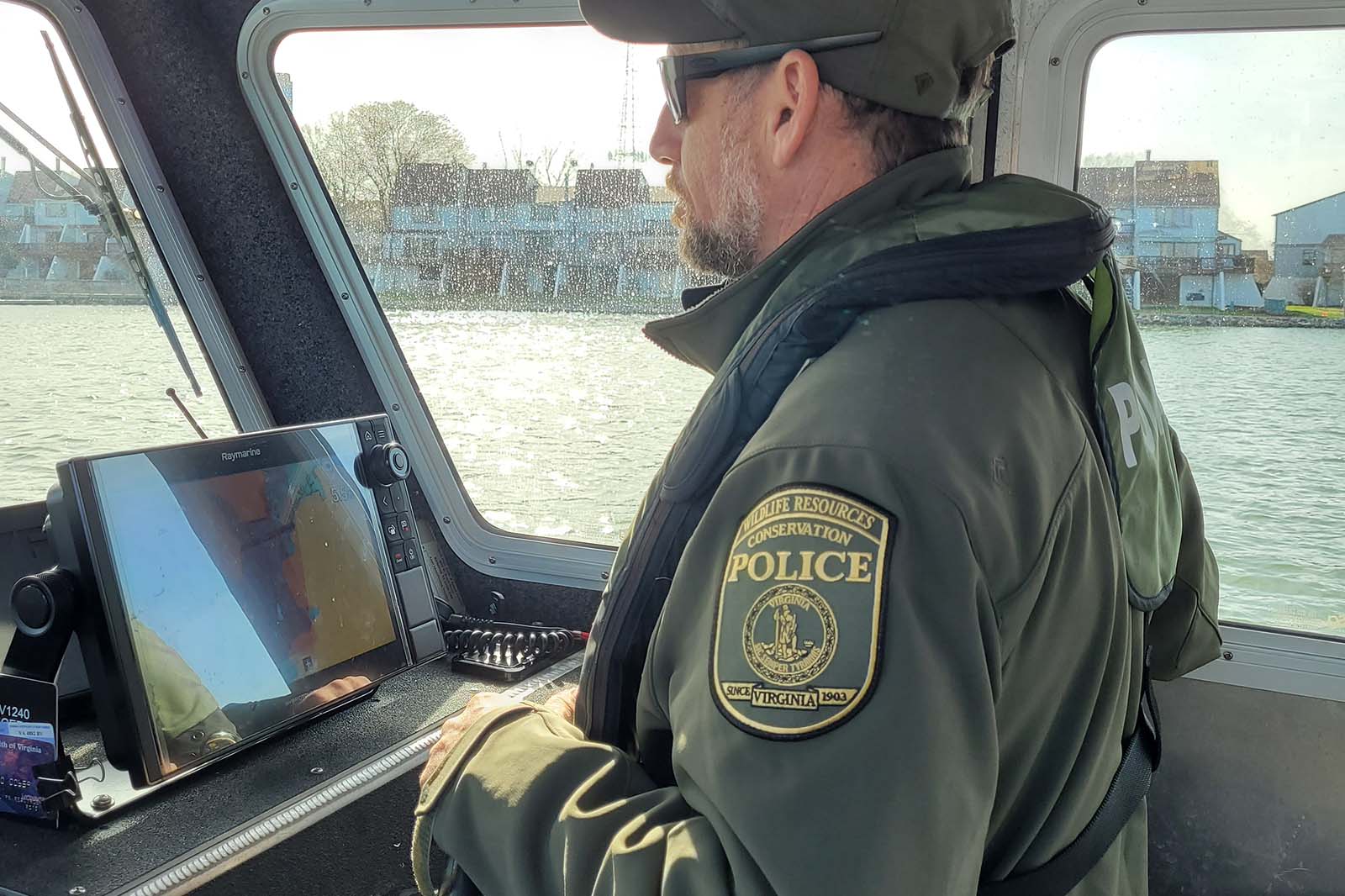
Office of Professional Standards Established
The DWR Conservation Police established their Office of Professional Standards (OPS) and an OPS Advisory Council to help promote the Professional Standards Creed within the Law Enforcement division of DWR. The Creed expects Conservation Police Officers (CPOs) and all law enforcement personnel in the agency to conduct their public service with unwavering ethical values. Additionally, their management and supervision commit to benchmarking against best practices in their professional conduct.
Learn More About the OPS
Funding Our Future
DWR depends on sustainable revenue from a number of sources. These include hunting and fishing licenses and permits, boat registrations and titles, and federal funds—some of which are based in part on the number of hunting and fishing licenses sold and the number of boats registered each year.
The Department’s conservation and outdoor recreation efforts also benefit from the sale of Virginia Conservation License Plates, branded merchandise, Virginia Wildlife magazine and calendar sales, Restore the Wild memberships, and donations.
Just as importantly, DWR increasingly depends on the transfer by the Virginia General Assembly of funds associated with the Virginia sales and use taxes on watercraft, as well as the sales tax on hunting, fishing, and wildlife-watching equipment (commonly referred to as HB38), purchased in the Commonwealth.
DWR is constantly seeking ways to increase these existing funding sources and to develop funding partnerships with other state agencies, non-profits, and private businesses.
How You Can Help
- By purchasing hunting and fishing licenses and permits
- By becoming a Restore the Wild member
- By purchasing a firearm or ammunition, or equipment for fishing, archery, or wildlife watching
- By registering and buying fuel for your boat
- By subscribing to Virginia Wildlife magazine and purchasing a Virginia Wildlife calendar
- By purchasing DWR-branded merchandise from DWR’s website
- By purchasing a Conservation License Plate through DMV
- By donating to DWR and the Wildlife Foundation of Virginia Partnership Fund
- By engaging DWR through sponsorships and public-private partnership opportunities

